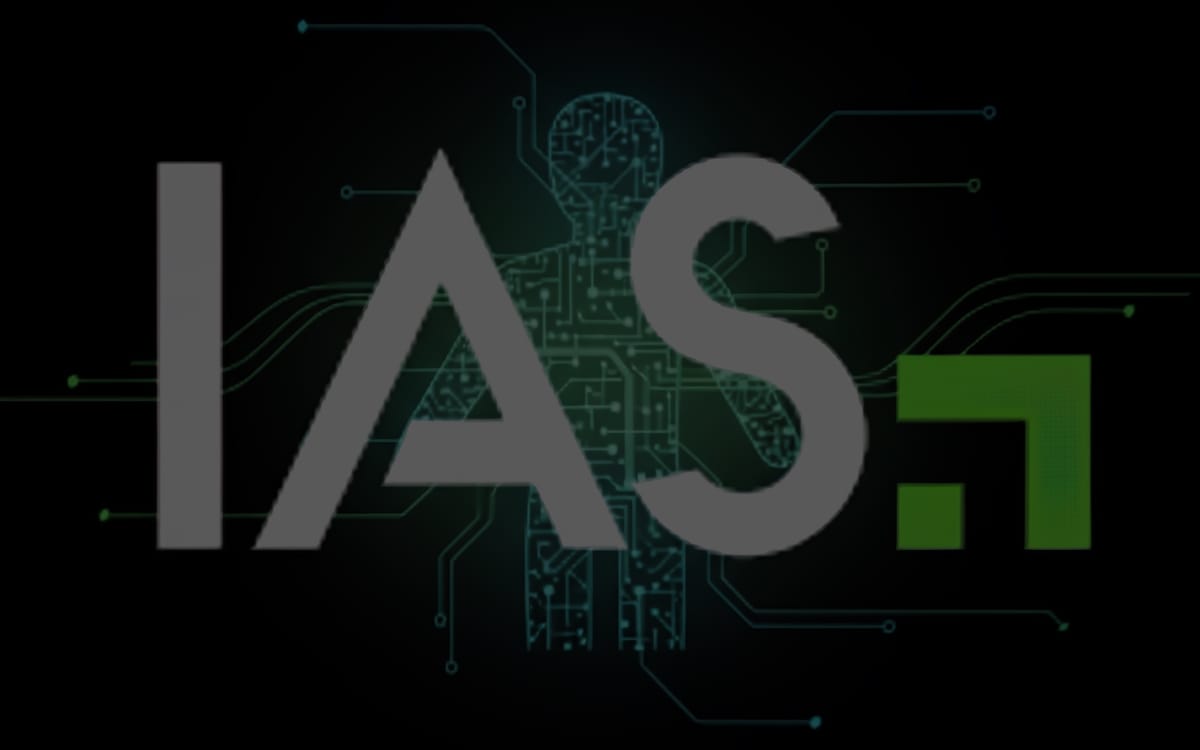As digital technologies reshape every aspect of society, students must be equipped and proficient in not only specialized literacies (such as digital literacy, data literacy, and AI literacy), but with a foundational skill set that allows them to think critically, reason logically, and solve problems effectively. Analytical literacy is the scaffolding upon which more specialized literacies are built. Students in the 21st century need strong critical thinking skills like reasoning, questioning, and problem-solving, before they can meaningfully engage with more advanced domains like digital, data, or AI literacy. Without these skills, students may struggle to engage critically with the technologies shaping their lives. We urge education leaders at the federal, state, and institutional levels to prioritize development of analytical literacy by incentivizing integration across disciplines, aligning standards, and investing in research and professional development.
Introduction
As society becomes increasingly shaped by digital technologies, data-driven decision-making, and artificial intelligence, the ability to think analytically is no longer optional, it’s essential. While digital, data, and AI literacies focus on domain-specific skills, analytical literacy enables students to engage with these domains critically and ethically. Analytical literacy encompasses critical thinking, logical reasoning, and problem-solving, and equips students to interpret complex information, evaluate claims, and make informed decisions. These skills are foundational not only for academic success but for civic engagement and workforce readiness in the 21st century.
Despite its importance, analytical literacy remains unevenly emphasized in K–12 education. These disparities are often driven by systemic inequities in school funding, infrastructure, and access to qualified educators. According to NCES’s Education Across America report, rural schools and those in under-resourced communities frequently lack the professional development opportunities, instructional materials, and technology needed to support analytical skill-building. In contrast, urban and well-funded districts are more likely to offer inquiry-based curricula, interdisciplinary projects, and formative assessment tools that foster deep thinking. Additionally, while some schools integrate analytical thinking through inquiry-based learning, project-based instruction, or interdisciplinary STEM curricula, there is no consistent national framework guiding its development at this time. Instructional strategies vary widely by state or district, and standardized assessments often prioritize procedural fluency over deeper cognitive engagement like analytical reasoning.
Recent research underscores the urgency of this issue. A 2024 literature review from the Center for Assessment highlights analytical thinking as a core competency for future success, noting its role in supporting other 21st-century skills such as creativity, collaboration, and digital fluency. Similarly, a systematic review published in the International Journal of STEM Education emphasizes the need for early engagement with analytical and statistical thinking to prepare students for a data-rich society.
There is growing consensus among educators, researchers, and policy advocates that analytical literacy deserves a more central role in K–12 education. Organizations such as NWEA and Code.org have called for stronger integration of analytical and data literacy skills into curriculum and professional development efforts. However, without coordinated policy action, these efforts remain fragmented.
This memo builds on that emerging momentum. It argues that analytical literacy should be treated as a skill that underpins students’ ability to engage meaningfully with digital, data, and AI literacies. By elevating analytical literacy through standards, instruction, and investment, we can ensure that all students are prepared to participate, innovate, and thrive in a complex and rapidly changing world.
To understand why analytical literacy must be prioritized, we examine the current landscape of specialized literacies and the foundational skills they require.
Challenges and Opportunities
In today’s interconnected world, digital literacy, data literacy, and AI literacy are no longer optional, they are essential skill sets for civic participation, economic mobility, and ethical decision-making. These literacies enable students to navigate online environments, interpret complex datasets, and engage thoughtfully with emerging technologies.
- Digital literacy encompasses the ability to use technology effectively and critically, including evaluating online information, understanding digital safety, and engaging ethically in digital environments.
- Data Literacy involves the capacity to understand, interpret, evaluate, and communicate data. This includes recognizing data sources, identifying patterns, and drawing informed conclusions.
- AI Literacy entails understanding the basic concepts of artificial intelligence, its applications, ethical implications, and how to interact with AI systems responsibly.
Together, these literacies form a cognitive toolkit that empowers students to be not just consumers of information and technology, but thoughtful participants in civic and digital life.
While these literacies address specific domains, they all fundamentally rely on what should be called Analytical Literacy. Analytical literacy, at its core, involves the ability to:
- Ask insightful questions. Identifying the core issues and seeking relevant information.
- Evaluate information critically. Assessing the credibility, bias, and relevance of sources.
- Identify patterns and relationships. Recognizing connections and trends in complex information.
- Reason logically. Constructing sound arguments and drawing valid inferences.
- Solve problems effectively. Applying analytical skills to find solutions and make informed decisions.
Yet, without structured development of these foundational skills, students risk becoming passive consumers of technology rather than active, informed participants. This presents an urgent opportunity: by centering Analytical Literacy in standards and assessment, instruction, and professional learning, we can create enduring pathways for students to participate, innovate, and thrive in an increasingly data-driven world.
Examples of implementation must include:
- In Standards and Assessment. States should revise academic standards to include grade-level expectations for analytical reasoning across disciplines. For example, middle school science standards might require students to construct evidence-based arguments using data, while high school civics assessments could include open-ended questions that ask students to evaluate competing claims in news media.
- In Instruction. Teachers should embed analytical skill development into daily practice through inquiry-based learning, Socratic seminars, or interdisciplinary projects. A math teacher could guide students in analyzing real-world datasets to identify trends and make predictions, while an English teacher might use argument mapping to help students deconstruct persuasive texts.
- In Professional Learning. Districts should offer workshops that train educators to use formative assessment strategies that surface student reasoning such as think-alouds, peer critiques, or performance tasks. Coaching cycles should focus on how to scaffold questioning techniques that push students beyond recall toward deeper analysis.
By embedding these practices systemically, we move from episodic exposure to analytical thinking toward a coherent, equitable framework that prepares all students for the demands of the digital age.
Addressing these gaps requires coordinated action across multiple levels of the education system. The following plan outlines targeted strategies for federal, state, and institutional leaders.
Plan of Action
To strengthen analytical literacy in K–12 education, we recommend targeted efforts from three federal offices, supported by state agencies, educational organizations, and teacher preparation programs.
Recommendation 1. Federal Offices
Federal agencies have the capacity to set national priorities, fund innovation, and coordinate cross-sector efforts. Their leadership is essential to catalyzing systemic change. For example:
White House Office of Science and Technology Policy (OSTP)
OSTP now chairs the newly established White House Task Force on Artificial Intelligence Education, per the April 2025 Executive Order on Advancing AI Education. This task force is charged with coordinating federal efforts to promote AI literacy and proficiency across the K–12 continuum. We recommend that OSTP:
- Expand the scope of the Task Force to explicitly include analytical literacy as a foundational competency for AI readiness.
- Ensure that public-private partnerships and instructional resources developed under the order emphasize reasoned decision-making as a core component, not just technical fluency.
- Use the Presidential Artificial Intelligence Challenge as a platform to showcase interdisciplinary student work that demonstrates analytical thinking applied to real-world AI problems.
This alignment would ensure that analytical literacy is not treated as an adjacent concern, but as a central pillar of the federal AI education strategy.
Institute of Education Sciences (IES)
IES should coordinate closely with the Task Force to support the Executive Order’s goals through a National Analytical Literacy Research Agenda. This agenda could:
- Fund studies that explore how analytical thinking supports AI literacy across grade levels.
- Evaluate the effectiveness of instructional models that integrate analytical reasoning into AI and computer science curricula.
- Develop scalable tools and assessments that measure students’ analytical readiness for AI-related learning pathways.
IES could also serve as a technical advisor to the Task Force, ensuring that its initiatives are grounded in evidence-based practice.
Office of Elementary and Secondary Education (OESE)
In light of the Executive Order’s directive for educator training and curriculum innovation, OESE should:
Prioritize analytical literacy integration in discretionary grant programs that support AI education.
Develop guidance for states on embedding analytical competencies into AI-related standards and instructional frameworks.
Collaborate with the Task Force to ensure that professional development efforts include training on how to teach analytical thinking—not just how to use AI tools.
National Science Foundation (NSF)
The National Science Foundation plays a pivotal role in advancing STEM education through research, innovation, and capacity-building. To support the goals of the Executive Order and strengthen analytical literacy as a foundation for AI readiness, we recommend that NSF:
- Establish a dedicated grant program focused on developing and scaling instructional models that integrate analytical literacy into STEM and AI education. This could include interdisciplinary curricula, project-based learning frameworks, and performance-based assessments that emphasize reasoning, problem-solving, and data interpretation.
- Fund research-practice partnerships that explore how analytical thinking develops across grade levels and how it supports students’ engagement with AI concepts. These partnerships could include school districts, universities, and professional organizations working collaboratively to design and evaluate scalable models.
- Support educator capacity-building initiatives, such as fellowships or professional learning networks, that equip teachers to foster analytical literacy in STEM classrooms. This aligns with NSF’s recent Dear Colleague Letters on expanding K–12 resources for AI education.
- Invest in technology-enhanced learning tools that provide real-time feedback on student reasoning and support formative assessment of analytical skills. These tools could be piloted in diverse school settings to ensure equity and scalability.
By positioning analytical literacy as a research and innovation priority, NSF can help ensure that K–12 students are not only technically proficient but cognitively prepared to engage with emerging technologies in thoughtful, ethical, and creative ways.
Note: Given the evolving organizational landscape within the U.S. Department of Education—including the elimination of offices like Educational Technology—it is critical to identify stable federal anchors. The agencies named above have longstanding mandates tied to research, policy innovation, and K–12 support, making them well-positioned to advance this work.
Recommendation 2. State Education Policymakers
While federal agencies can provide vision and resources, states hold the levers of implementation. Their role is critical in translating policy into classroom practice.
While federal agencies can provide strategic direction and funding, the implementation of analytical literacy must be led by states. Each state has the authority—and responsibility—to shape standards, assessments, and professional development systems that reflect local priorities and student needs. To advance analytical literacy meaningfully, we recommend the following actions:
Elevate Analytical Literacy in Academic Standards
States should conduct curriculum audits to identify where analytical skills are currently embedded—and where gaps exist. This process should inform the revision of academic standards across disciplines, ensuring that analytical literacy is treated as a foundational competency, not an ancillary skill. California’s ELA/ELD Framework, for example, emphasizes inquiry, argumentation, and evidence-based reasoning across subjects—not just in English language arts. Similarly, the History–Social Science Framework promotes critical thinking and source evaluation as core civic skills.
States can build on these models by:
- Developing cross-disciplinary analytical literacy frameworks that guide integration from elementary through high school.
- Embedding analytical competencies into STEM, humanities, and career technical education standards.
- Aligning revisions with the goals of the Executive Order, which calls for foundational skill-building to support digital and AI literacy.
Invest in Professional Development and Instructional Capacity
States should fund and scale professional learning ecosystems that equip educators to teach analytical thinking explicitly. This includes:
- Training on inquiry-based learning, Socratic dialogue, and formative assessment strategies that surface student reasoning.
- Development of microcredential pathways for educators to demonstrate expertise in fostering analytical literacy across content areas.
- Support for instructional coaches and teacher leaders to model analytical practices and mentor peers.
California’s professional learning modules aligned to the Common Core State Standards and ELA/ELD frameworks offer a useful starting point for designing scalable, standards-aligned training.
Redesign Student Assessments to Capture Deeper Thinking
States should move beyond traditional standardized tests and invest in assessment systems that measure analytical reasoning authentically. States can catalyze this innovation by issuing targeted Requests for Proposals (RFPs) that invite districts, assessment developers, and research-practice partnerships to design and pilot new models of assessment aligned to analytical literacy. These RFPs should prioritize:
- Performance tasks that require students to analyze real-world problems and propose solutions.
- Portfolio assessments that document students’ growth in reasoning and problem-solving over time.
- Open-ended questions that ask students to evaluate claims, synthesize evidence, and construct logical arguments.
- Scalable models that can inform statewide systems over time.
By using the RFP process strategically, states can surface promising practices, support local innovation, and build a portfolio of assessment approaches that reflect the complexity of students’ analytical capabilities.
Recommendation 3. Professional Education Organizations
Beyond government, professional education organizations shape the field through resources, advocacy, and collaboration. They are key partners in scaling analytical literacy.
Professional education organizations play a vital role in shaping the landscape of K–12 education. These groups—ranging from subject-specific associations like the National Council of Teachers of English (NCTE) and the National Science Teaching Association (NSTA), to broader coalitions like ASCD and the National Education Association (NEA)—serve as hubs for professional learning, policy advocacy, resource development, and field-wide collaboration. They influence classroom practice, inform state and federal policy, and support educators through research-based guidance and community-building.
Because these organizations operate at the intersection of practice, policy, and research, they are uniquely positioned to champion analytical literacy as a foundational skill across disciplines. To advance this work, we recommend the following actions:
- Develop Flexible, Discipline-Specific Resources. Create adaptable instructional materials—such as lesson plans, assessment templates, and classroom protocols—that help educators integrate analytical thinking into diverse subject areas. For example, NCTE could develop resources that support argument mapping in English classrooms, while NSTA might offer tools for teaching evidence-based reasoning in science labs.
- Advocate for Analytical Literacy as a National Priority. Publish position papers, host public events, and build strategic partnerships that elevate analytical literacy as essential to digital and civic readiness. Organizations can align their advocacy with the federal directive for AI education, emphasizing the role of analytical thinking in preparing students for ethical and informed engagement with emerging technologies.
- Foster Cross-Sector Collaboration. Convene working groups, research-practice partnerships, and educator networks to share best practices and scale effective models. For example, AERA could facilitate studies on how analytical literacy develops across grade levels, while CoSN might explore how digital tools can support real-time feedback on student reasoning.
By leveraging their convening power, subject-matter expertise, and national reach, professional education organizations can accelerate the adoption of analytical literacy and ensure it is embedded meaningfully into the fabric of K–12 education.
Recommendation 4. Teacher Preparation Programs
To sustain long-term change, we must begin with those entering the profession. Teacher preparation programs are the foundation for instructional capacity and must evolve to meet this moment.
Teacher preparation programs (TPPs) are the gateway to the teaching profession. Housed in colleges, universities, and alternative certification pathways, these programs are responsible for equipping future educators with the knowledge, skills, and dispositions needed to support student learning. Their influence is profound: research consistently shows that well-prepared teachers are the most important in-school factor for student success.
Yet many TPPs face persistent challenges. Too often, graduates report feeling underprepared for the realities of diverse, data-rich classrooms. Coursework may emphasize theory over practice, and clinical experiences vary widely in quality. Critically, few programs offer explicit training in how to foster analytical literacy—despite its centrality to digital, data, and AI readiness. In response to national calls for foundational skill-building and educator capacity, TPPs must evolve to meet this moment.
While federal funding for teacher preparation has become more limited, states are stepping in through innovative models like teacher residencies, registered apprenticeships, and microcredentialing pathways. These initiatives are often supported by modified use of Title II funds, state general funds, and workforce development grants. To accelerate this momentum, federal programs like Teacher Quality Partnership (TQP) grants and Supporting Effective Educator Development (SEED) grants could be adapted to prioritize analytical literacy, while states can issue targeted RFPs to redesign coursework, practicum experiences, and capstone projects that center reasoning, problem-solving, and ethical decision-making. To ensure that new teachers are ready to cultivate analytical thinking in their students, we recommend the following actions:
- Integrate Analytical Pedagogy into Coursework and Practicum. Embed instructional strategies that center analytical literacy into pre-service coursework. This includes training in inquiry-based learning, argumentation, and data interpretation. Practicum experiences should reinforce these strategies through guided observation and practice in real classrooms.
- Ensure Faculty Model Analytical Thinking. Faculty must demonstrate analytical reasoning in their own teaching—whether through modeling how to deconstruct complex texts, facilitating structured debates, or using data to inform instructional decisions. This modeling helps pre-service teachers internalize analytical habits of mind.
- Strengthen Field Placements for Analytical Instruction. Partner with districts to place candidates in classrooms where analytical literacy is actively taught. Provide structured mentorship from veteran teachers who use questioning techniques, performance tasks, and formative assessments to surface student reasoning.
- Develop Capstone Projects Focused on Analytical Literacy. Require candidates to complete a culminating project that demonstrates their ability to design, implement, and assess instruction that builds students’ analytical skills. These projects could be aligned with state standards and local district priorities.
- Align Program Outcomes with Emerging Policy Priorities. Ensure that program goals reflect the competencies outlined in federal initiatives like the AI Education Executive Order. This includes preparing teachers to support foundational literacies that enable students to engage critically with digital and AI technologies.
Together, these actions form a coherent strategy for embedding analytical literacy across the K–12 continuum. But success depends on bold leadership and sustained commitment. By reimagining teacher preparation through the lens of analytical literacy, we can ensure that every new educator enters the classroom equipped to foster deep thinking, ethical reasoning, and problem-solving—skills that students need to thrive in a complex and rapidly changing world.
Conclusion
Analytical literacy is not a nice-to-have, it is a prerequisite for the specialized proficiencies students need in today’s complex world. By embedding critical thinking, logical reasoning, and problem-solving across the K–12 continuum, we empower students to meet challenges with curiosity and discernment. We urge policymakers, educators, and institutions to act boldly by demanding analytical literacy be established as a cornerstone of 21st-century education. and co-create a future where every student has the analytical tools essential for meaningful participation, innovative thinking, and long-term success in the digital age and beyond.
Education & Workforce
day one project
Analytical Literacy First: A Prerequisite for AI, Data, and Digital Fluency
tudents in the 21st century need strong critical thinking skills like reasoning, questioning, and problem-solving, before they can meaningfully engage with more advanced domains like digital, data, or AI literacy.
11.07.25
|
13 min read
Improving Standardized Test Score Reporting and Administration for Students, Caregivers, and Educators
We need to overhaul the standardized testing and score reporting system to be more accessible to all of the end users of standardized tests: educators, students, and their families.
11.05.25
|
10 min read
Education & Workforce
day one project
Moving Federal Postsecondary Education Data to the States
Moving postsecondary education data collection to the states is the best way to ensure that the U.S. Department of Education can meet its legislative mandates in an era of constrained federal resources.
10.24.25
|
6 min read
Education & Workforce
day one project
Investing in Young Children Strengthens America’s Global Leadership
Supporting children’s development through health, nutrition, education, and protection programs helps the U.S. achieve its national security and economic interests, including the Administration’s priorities to make America “safer, stronger, and more prosperous.”
10.23.25
|
9 min read










